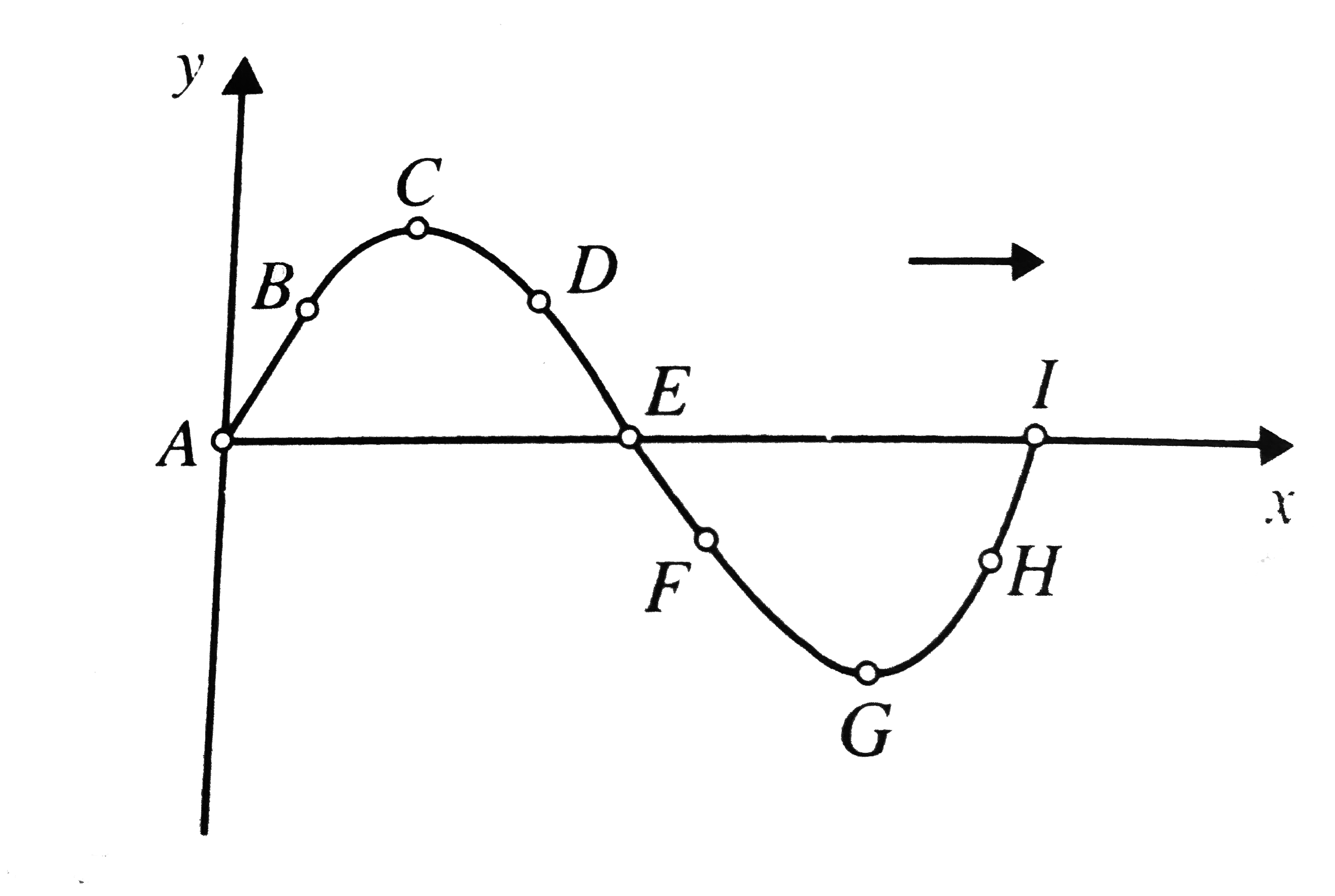A transverse wave travels along x-axis . The particles of medium move
Along x-axis
Along y-axis
Along z-axis
Either along y- axis or z-axis
The correct Answer is:D
To solve the problem of how the particles of a medium move when a transverse wave travels along the x-axis, we can break it down into the following steps:
1. Understanding Wave Propagation:
- A transverse wave is characterized by the motion of the medium's particles being perpendicular to the direction of wave propagation. In this case, the wave is traveling along the x-axis.
2. Identifying the Direction of Particle Motion:
- Since the wave is moving in the x-direction, the particles of the medium must move in a direction that is perpendicular to this.
3. Determining Perpendicular Axes:
- The axes that are perpendicular to the x-axis are the y-axis and the z-axis. Therefore, the particles can only move in these two directions.
4. Conclusion:
- Thus, the particles of the medium can either move along the y-axis or the z-axis as the transverse wave travels along the x-axis.
Final Answer:
The particles of the medium move either along the y-axis or the z-axis.
---
- A transverse wave is characterized by the motion of the medium's particles being perpendicular to the direction of wave propagation. In this case, the wave is traveling along the x-axis.
- Since the wave is moving in the x-direction, the particles of the medium must move in a direction that is perpendicular to this.
- The axes that are perpendicular to the x-axis are the y-axis and the z-axis. Therefore, the particles can only move in these two directions.
- Thus, the particles of the medium can either move along the y-axis or the z-axis as the transverse wave travels along the x-axis.
The particles of the medium move either along the y-axis or the z-axis.
Topper's Solved these Questions
- WAVESBOOK - AAKASH INSTITUTE ENGLISHCHAPTER - WAVESEXERCISE - ASSIGNMENT ( SECTION-B ( Objective type Questions ))
45 Videos
- WAVESBOOK - AAKASH INSTITUTE ENGLISHCHAPTER - WAVESEXERCISE - ASSIGNMENT ( SECTION-C ( Previous year Questions ))
53 Videos
- WAVESBOOK - AAKASH INSTITUTE ENGLISHCHAPTER - WAVESEXERCISE - EXERCISE
20 Videos
- WAVE OPTICSBOOK - AAKASH INSTITUTE ENGLISHCHAPTER - WAVE OPTICSEXERCISE - Assignment (Section-J (Aakash Challengers question))
1 Videos
- WORK, ENERGY AND POWERBOOK - AAKASH INSTITUTE ENGLISHCHAPTER - WORK, ENERGY AND POWEREXERCISE - Assignment (SECTION - D)
13 Videos
Similar Questions
Knowledge Check
In a transverse wave, the particles of the medium
Avibrate in a direction perpendicular to the direction of the propagation.Bvibrate in a direction parallel to the direction or of the propagationCmove in circleDmove in ellipse
A transverse wave is travelling on a string. The equation of the wave
View SolutionA transverse wave travelling along negativ y-axis its snap shot is given at any instant of tie t. points which is having velocity in negative x-direction.

View SolutionThe equation of a transverse wave travelling along x-axis is given by y = 10 sin π= (0.01 x- 2.0t) where y and x are represented in centimeters and, in seconds. Find the amplitude, frequency velocity and wavelength of the wave.
View SolutionA transverse wave is travelling along a string in the positive x-axis. The

shows the photograph of the wave at an instant. Find
(a) the points moving upwards
(b) the points moving downwards
(c ) the points which have zero velocity
(d) the points which have maximum velocity
View SolutionA transverse wave is travelling along a string in the positive x-axis. The

shows the photograph of the wave at an instant. Find
(a) the points moving upwards
(b) the points moving downwards
(c ) the points which have zero velocity
(d) the points which have maximum velocity
View SolutionA transverse wave travelling in a string produce maximum transverse velocity of 3m/s and maximum transverse acceleration 90m/s2 in a particle. If the velocity of wave in the string is 20m/s. Datermine the equation of the wave ?
View SolutionA transverse wave travelling along the positive x-axis, given by y=Asin(kx−ωt) is superposed with another wave travelling along the negative x-axis given by y=Asin(kx+ωt). The point x=0 is
View Solution
